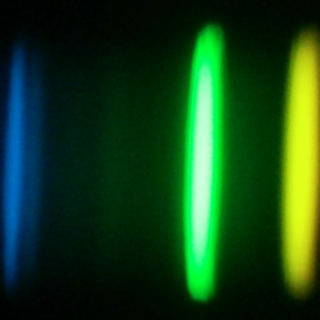Bibcode
Sestito, Federico; Vitali, Sara; Jofre, Paula; Venn, Kim A.; Aguado, David S.; Aguilera-Gómez, Claudia; Ardern-Arentsen, Anke; de Brito Silva, Danielle; Carlberg, Raymond; Eldridge, Camilla J. L.; Gran, Felipe; Hill, Vanessa; Jablonka, Pascale; Kordopatis, Georges; Martin, Nicolas F.; Matsuno, Tadafumi; Rusterucci, Samuel; Starkenburg, Else; Viswanathan, Akshara
Bibliographical reference
Astronomy and Astrophysics
Advertised on:
9
2024
Journal
Citations
11
Refereed citations
9
Description
The most metal-poor stars provide valuable insights into the early chemical enrichment history of a system, carrying the chemical imprints of the first generations of supernovae. The most metal-poor region of the Sagittarius dwarf galaxy remains inadequately observed and characterised. To date, only ∼4 stars with [Fe/H] < ‑2.0 have been chemically analysed with high-resolution spectroscopy. In this study, we present the most extensive chemical abundance analysis of 12 low-metallicity stars with metallicities down to [Fe/H] = ‑3.26 and located in the main body of Sagittarius. These targets, selected from the Pristine Inner Galaxy Survey, were observed using the MIKE high-resolution spectrograph at the Magellan-Clay telescope, which allowed us to measure up to 17 chemical species. The chemical composition of these stars reflects the imprint of a variety of type II supernovae (SNe II). A combination of low- to intermediate-mass high-energy SNe and hypernovae (∼10 ‑ 70 M⊙) is required to account for the abundance patterns of the lighter elements up to the Fe-peak. The trend of the heavy elements suggests the involvement of compact binary merger events and fast-rotating (up to ∼300 km s‑1) intermediate-mass to massive metal-poor stars (∼25 ‑ 120 M⊙) that are the sources of rapid and slow processes, respectively. Additionally, asymptotic giant branch stars contribute to a wide dispersion of [Ba/Mg] and [Ba/Eu]. The absence of an α‑knee in our data indicates that type Ia supernovae did not contribute in the very metal-poor region ([Fe/H] ≤ ‑2.0). However, they might have started to pollute the interstellar medium at [Fe/H] > ‑2.0, given the relatively low [Co/Fe] in this metallicity region.
Related projects

Chemical Abundances in Stars
Stellar spectroscopy allows us to determine the properties and chemical compositions of stars. From this information for stars of different ages in the Milky Way, it is possible to reconstruct the chemical evolution of the Galaxy, as well as the origin of the elements heavier than boron, created mainly in stellar interiors. It is also possible to
Carlos
Allende Prieto